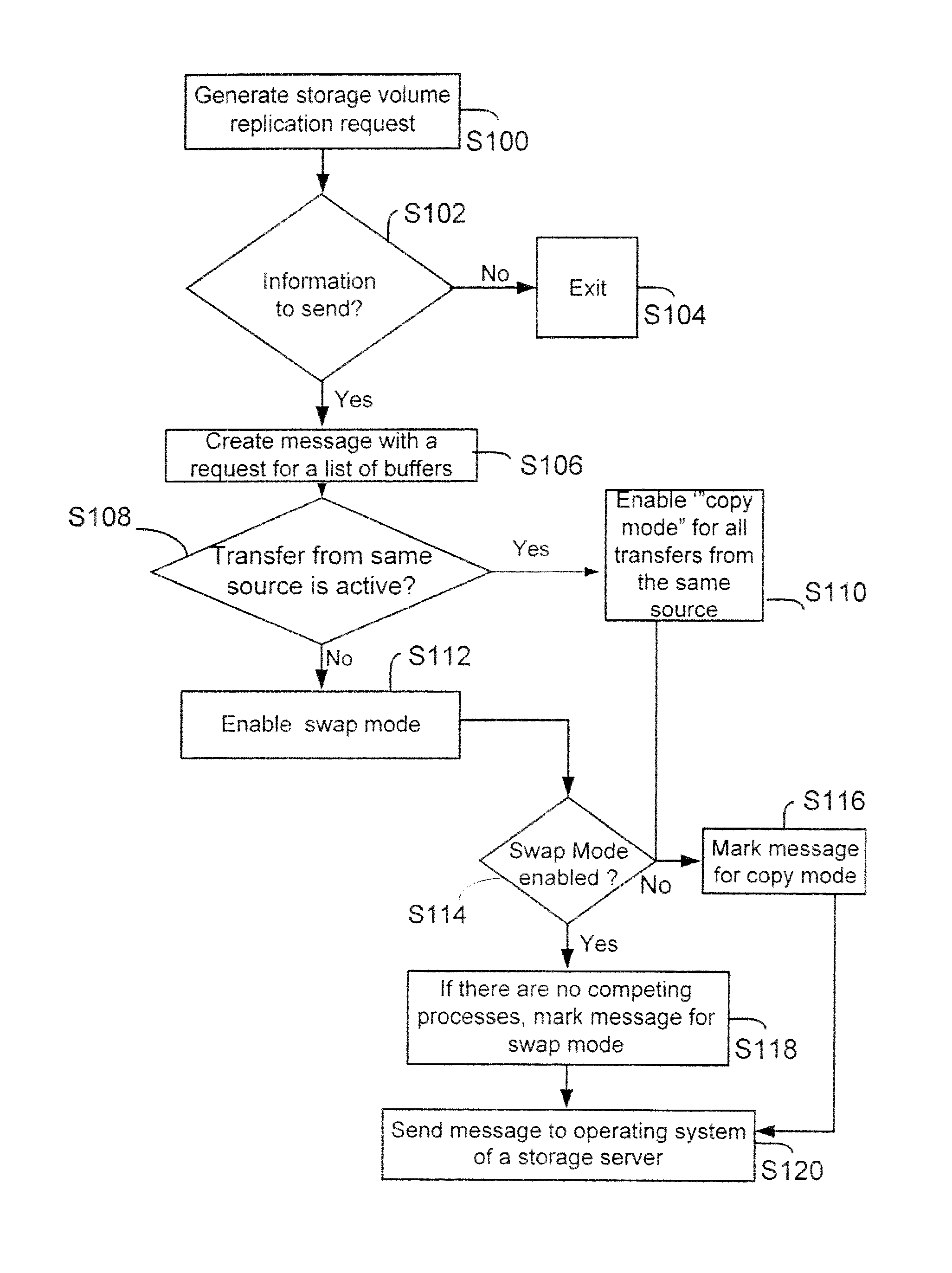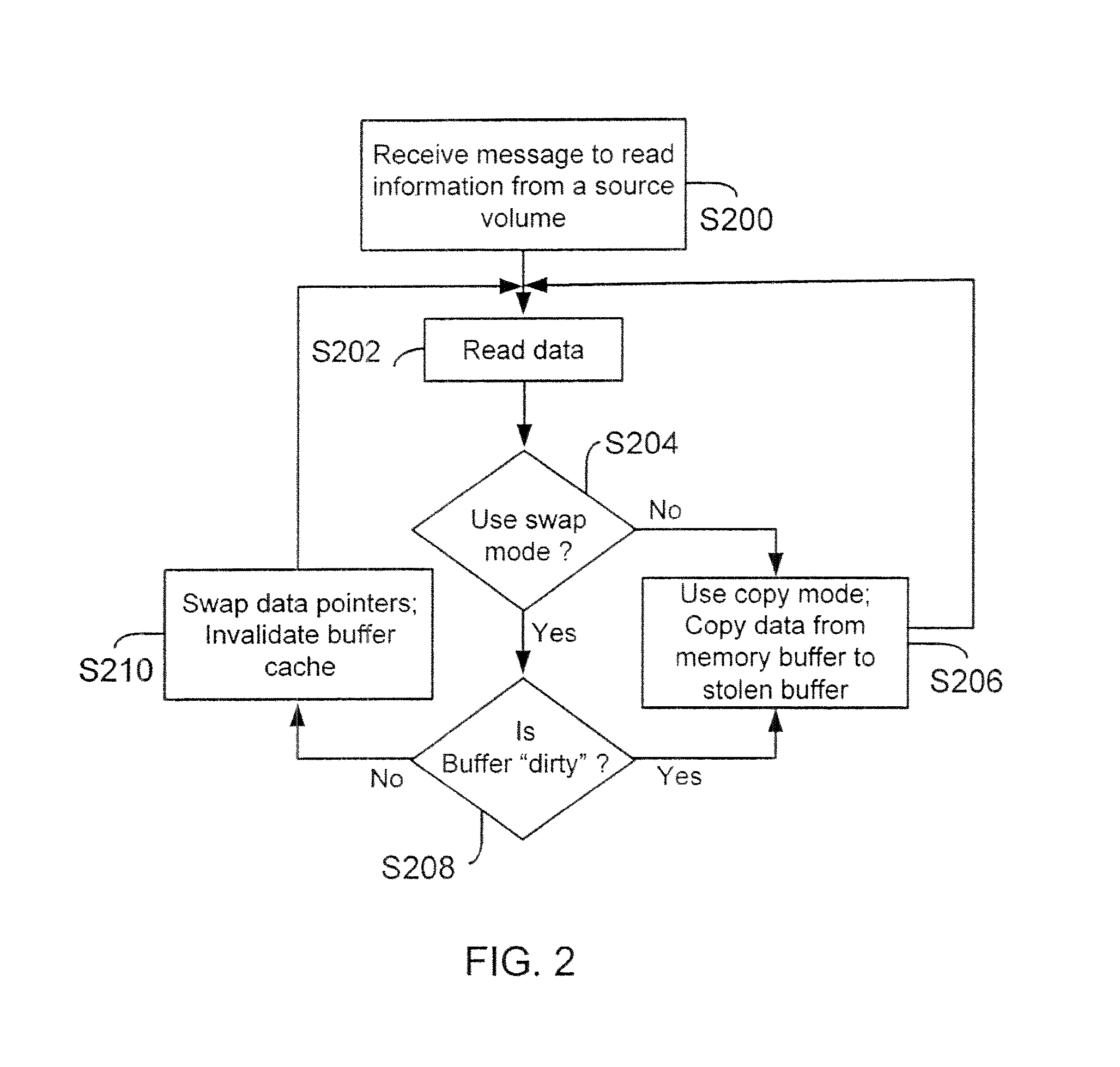Method and system for replicating stored information
a technology for replicating stored information and storing information, applied in the direction of data conversion, error detection/correction, instruments, etc., can solve problems such as wasting storage server computing resources
- Summary
- Abstract
- Description
- Claims
- Application Information
AI Technical Summary
Benefits of technology
Problems solved by technology
Method used
Image
Examples
Embodiment Construction
[0029]The following definitions are provided as they are typically (but not exclusively) used in a storage system, implementing the various adaptive embodiments described herein.
[0030]“Copy Mode” (or copy mode) means a mode for executing a replication operation, during which information from a storage volume (includes both logical and physical storage volumes) is first loaded in a memory buffer and then copied to a “stolen buffer”. An application (for example, a volume snap mirror application (VSM) managing the information replication operation then accesses the information from the stolen buffer and replicates the information at another location.
[0031]“Memory Buffer” means a storage location (includes both logical and physical) that is typically used to temporarily store information. In a storage server environment, the operating system manages a plurality of memory buffers for storing information received from a storage volume.
[0032]“Snapshot” means a point in time copy of a stora...
PUM
 Login to View More
Login to View More Abstract
Description
Claims
Application Information
 Login to View More
Login to View More - R&D
- Intellectual Property
- Life Sciences
- Materials
- Tech Scout
- Unparalleled Data Quality
- Higher Quality Content
- 60% Fewer Hallucinations
Browse by: Latest US Patents, China's latest patents, Technical Efficacy Thesaurus, Application Domain, Technology Topic, Popular Technical Reports.
© 2025 PatSnap. All rights reserved.Legal|Privacy policy|Modern Slavery Act Transparency Statement|Sitemap|About US| Contact US: help@patsnap.com



